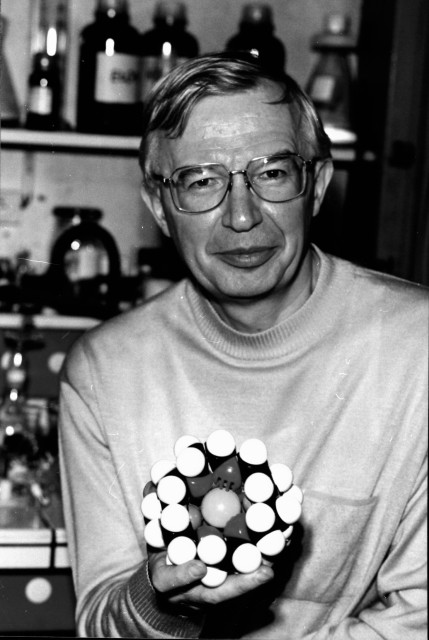Jean-Marie Lehn
1939-

Lehn's research on the chemical basis of "molecular recognition", the way in which a receptor molecule recognizes and selectively binds a substrate molecule, led to his sharing the 1987 Nobel Prize in Chemistry (with D. J. Cram, see portrait, and Charles J. Pedersen). Over the years this research expanded to a new field, "supramolecular chemistry"; it deals with complex entities formed by association of two or more chemical species held together by intermolecular forces. Lehn has extended this field to the design of supramolecular devices (i.e., molecular electronics) and to systems that undergo self-organization by spontaneous assembly into well-defined supramolecular architectures. He is the author of over 500 publications. His two books, "Macrocyclic Chemistry: Aspects of Organic and Inorganic Supramolecular Chemistry" (1993) and "Supramolecular Chemistry: Concepts and Perspectives" (1995) summarize much of this work.
Lehn was born in Rosheim, Alsace, France and received his doctorate at the University of Strasbourg. After a postdoctorate year at Harvard (with R. B. Woodward, vitamin B12 synthesis) he returned to Strasbourg. In 1970 he became Professor of Chemistry at the Université Louis Pasteur in Strasbourg and since 1979, Professor at the Collège de France in Paris. His many awards include election as Foreign Associate of the U.S. National Academy of Sciences (1980), the Gold Medal of the CNRS (Centre National de la Recherche Scientifique (1981), the Paracelsus Prize of the Swiss Chemical Society (1982) and Medals from Prague (Charles University, 1995) and Warsaw (the Polish Academy of Sciences, 1996).
Sponsor: James L. Dye
Long Dinh Le
Location in chemistry building: Basement Floor; Elevator area East Wall; Sequence 1
Source: Professor Lehn